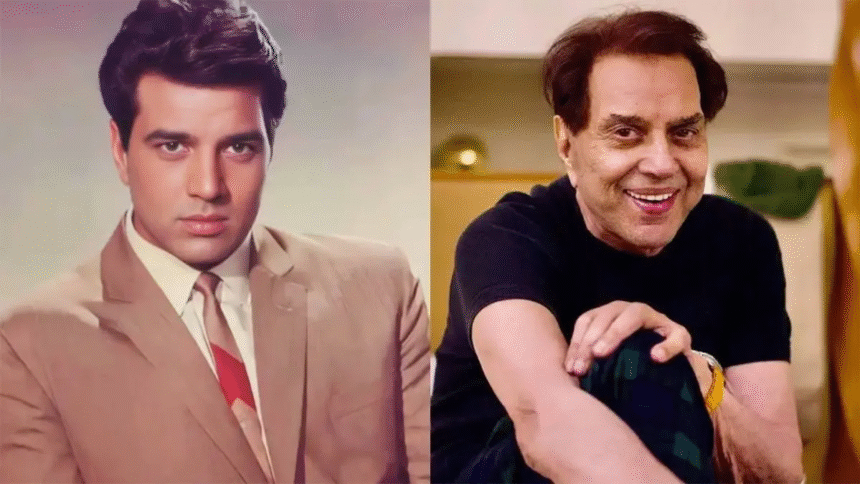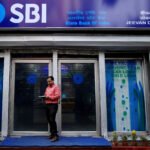Let’s take a moment. Imagine a figure who stood tall—literally and metaphorically—as the embodiment of heroism, romance, and cinematic charm for more than half a century. That was Dharmendra. Not just a name, but an era-maker. Born December 8, 1935 in Punjab, he journeyed from a small village to become one of Indian cinema’s most beloved leading men with more than 300 films to his credit.
In this article we’ll walk through his early days, his rise, his iconic roles, his off-screen persona, his family and legacy, and why he remains timeless. Grab a chai, get comfortable—this is one ride through Bollywood history.
Early Life: From Sahnewal to Bombay Dreams
Dharmendra began life in Nasrali (or Sahnewal) in Punjab, born to a school-teacher father and mother in a humble home. The move from Punjab to Mumbai (then Bombay) started when he entered a talent hunt organised by Filmfare.
Think of it as: small town farmer’s son dreams of the big screen. Mumbai was the magnet. He won the contest, found his calling—and soon found himself in front of the camera. His debut wasn’t a blockbuster, but as they say, you’ve got to start somewhere.
Climbing the Ladder: The 1960s Breakthrough
In the 1960s Dharmendra started to show what he was made of. Films like Bandini (1963), Haqeeqat (1964) and Anupama (1966) revealed an actor capable of emotional depth and range.
And then there was Phool Aur Patthar (1966) — a landmark film in his career that brought him the kind of spotlight most actors crave early on. His romantic appeal was undeniable: deep voice, expressive eyes, charismatic smile. He wasn’t just playing hero; he became the hero.
Becoming a Box-Office Anchor: The 1970s Era
When you think of the 1970s in Bollywood, images of rugged heroism, bold romances, high-voltage action march in. Dharmendra was right at the heart of it. He front-lined films across genres: action, romance, comedy—you name it.
Then came the turning point: Sholay (1975). He played Veeru, alongside Amitabh Bachchan’s Jai—and the film is considered one of the greatest in Hindi cinema. Veeru’s swagger, his chemistry, the unforgettable dialogue (“Basanti, in kutton ke saamne mat nachna”)—it all entered popular culture. In that moment, Dharmendra didn’t just star in a film; he became part of the Indian pop-culture DNA.
The Range: Beyond the Macho Hero
While “He-Man” is a tag often applied to him, Dharmendra also proved he could do subtle. His performance in Satyakam (1969) showed moral depth and vulnerability, his earlier films showed emotional layers. His romances were tender and his comic timing sharp. Many heroes are one-dimensional—Dharmendra wasn’t.
In films like Chupke Chupke, Seeta Aur Geeta, Jugnu, he explored comedy and charm, while in The Burning Train or Dharam Veer he rocked action. His filmography is a buffet—something for every audience.
Off-Screen Persona: A Gentleman Amid the Glamour
What makes legend stay beloved? Not just the roles, but the person. Dharmendra’s off-screen persona was grounded—warm, humorous, unpretentious. Co-stars described him as friendly and respectful. He joked about his image, valued family and simplicity.
When someone stays humble in an industry glitzy with ego, it resonates. That’s one reason his star didn’t fade even when the industry changed dramatically.
Romance, Family & Life Beyond the Camera
Any talk of Dharmendra must mention his romance with Hema Malini. Their on-screen chemistry (in Seeta Aur Geeta, Dream Girl, Jugnu, Sholay) blossomed into real life—they married in 1980. The couple remains one of Indian cinema’s most loved pairs.
He had earlier married Prakash Kaur in a traditional union, and together they had children (Sunny Deol, Bobby Deol, Vijeta, Ajeeta). With Hema he had daughters Esha Deol and Ahana Deol.
The family story is complex (multiple households, different residences) yet handled with dignity publicly. A star with two homes—but one heart with his fans and craft.
Later Years: Reinventions & Legacy Projects
Even as younger stars emerged and Bollywood shifted, Dharmendra kept reinventing. He appeared in the Yamla Pagla Deewana franchise alongside his sons, embraced age and humour. His final major on-screen appearance was in Rocky Aur Rani Kii Prem Kahaani (2023) where his presence reminded audiences: the star still shines.
He even dabbled in politics — elected to the Lok Sabha (lower house of India’s Parliament) from Bikaner between 2004-09. Many actors step away—they didn’t. He stayed connected.
Cultural Impact: Why He Mattered & Still Matters
Why does Dharmendra matter beyond his films? Here are a few reasons:
- He bridged eras—from black-and-white films to colour blockbusters.
- His style of heroism blended strength and sensitivity.
- Dialogues, songs, characters he played became part of everyday Indian conversations.
- For millions, he wasn’t just a star — he was their hero.
His legacy lives in film-reels, playlists, memes, kitchen conversations. The “He-Man” tag wasn’t just hype—it reflected how Bollywood catalogued desire, strength, romance for decades.
The Farewell & Final Thoughts
As of November 2025, it has been reported that Dharmendra passed away at age 89 in Mumbai’s Breach Candy hospital. The outpouring of tributes from fans, film-makers, politicians reflects how much he meant.
But even as we say goodbye, we also say thank you: to the films that made us laugh, cry, cheer, sing; to the actor who made heroism look effortless; to the man who stayed real.
Read More: Kantara 2 Worldwide Collection Till Date: A Complete Box Office Review
Conclusion
In a world of fleeting fame and changing lights, Dharmendra stood firm. He worked through decades, adapted, stayed loved—not because he chased novelty, but because he delivered sincerity. His story reminds us that true stardom isn’t just about box-office numbers; it’s about connection.
So next time you hear a classic film dialogue, see a retro poster, or hear someone mimic that famous line — remember the man behind the legend. Because even if cameras fade, good stories echo forever.









